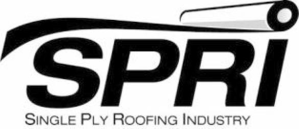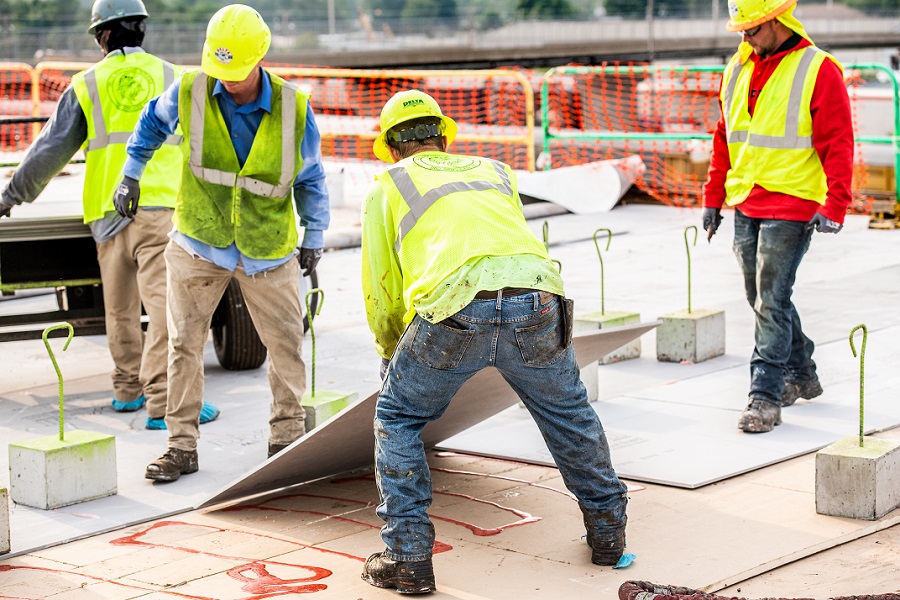Hammers and Rollers and Drills, Oh My! – Protecting the Roof from Human Impact and Other Hazards
While weather events tend to get the attention when it comes to roof damage, the daily impact of human traffic is much more worrisome.
Today, more commercial buildings require larger air conditioning capacity to support microchip, EV batteries and medical device manufacturing. So, their roofs are supporting more equipment than ever before – HVAC units, photovoltaic systems and solar grid-tied electrical systems.
Architects, specifiers, consultants and roofing contractors all recommend dependable roof assemblies for the long-term integrity of the commercial building. A low slope commercial roof allows business owners to keep those highly desired air conditioning units on the roof rather than on the ground. This configuration keeps HVAC units and power grid systems safe from damage and vandalism and prevents having to push cold air upwards, which can often take a lot of energy.
Unfortunately, the result of this additional equipment is significantly more human traffic on commercial building roofs, which can compromise the integrity of roof assemblies. From service technicians and electricians to plumbers and roofing contractors, there are more people than ever spending time on commercial roofs for repairs and routine maintenance.
And those people carry hammers, meters, rollers and tool belts and walk on the roof with work boots that step on leftover or bent fasteners and drag tools and power cords across the roof – all of which can puncture roof membranes. When damage inevitably occurs, there’s plenty of finger pointing and it’s always the fault of the “other guy.” Those human hazards – along with the more highly publicized wind and weather events – make it more difficult to avoid damage that can compromise roofing systems.
So, what can a building owner do to protect the commercial roof from the daily wear and tear of human impact and other hazards? Well, one solution is to install gypsum or cement board as protective cover boards to help prevent punctures, leaks and other damage to the roofing assemblies.
The use of a hard cover board can extend roof life in both single-ply and multi-ply applications. They offer a smooth, dense, flat surface for the membrane and protect the insulation from human traffic. Hard cover boards increase puncture resistance and modulate membrane temperature fluctuations, both of which extend the performance of the membrane. They also improve fire ratings and thermal performance and help prevent bubbling and blistering in hot asphalt installations.
For high-performing and long-lasting facilities like manufacturing facilities, hospitals, schools, data centers, airports and government buildings, the roof assembly must perform exceptionally well. A superior roof assembly comes about by design and the addition of a hard cover board helps ensure the long-term viability of a roof assembly.
When it comes to those much-ballyhooed weather events, hard cover boards help protect against storm and hail damage and can increase wind uplift ratings. They also eliminate potential polyisocyanurate insulation facer delamination.
The National Roof Contractors Association (NRCA) has recommended cover boards since 2000 and the use of a non-combustible cover board such as “glass mat gypsum board” has been recommended since 2006 by both the NRCA and the Midwest Roof Contractors Association (MRCA), which offers additional peace of mind to building owners and property managers.
Hammers and rollers and drills, oh my! The hazards of human traffic on roof assemblies are only going to increase as roof construction and repair demands continue. So, hedge your bet and choose a hard cover board to help protect your valuable roof assemblies.
Brian Randall is the Director of Business and Technical Development at National Gypsum Company, headquartered in Charlotte, N.C. One of the original inventors of Glass Mat Gypsum Panels, he has been an innovator and authority on building sheathing, roofing and building practices since 1980. In addition to serving on many ASTM committees, he has been a member of the three model building codes, the Gypsum Association, Exterior Insulation Manufacturers Association, NRCA, IIBEC and RICOWI. Randall is named on 21 patents for glass-reinforced gypsum board and leads the DEXcell Roof Board development team. Contact Brian at brianr@nationalgypsum.com.

